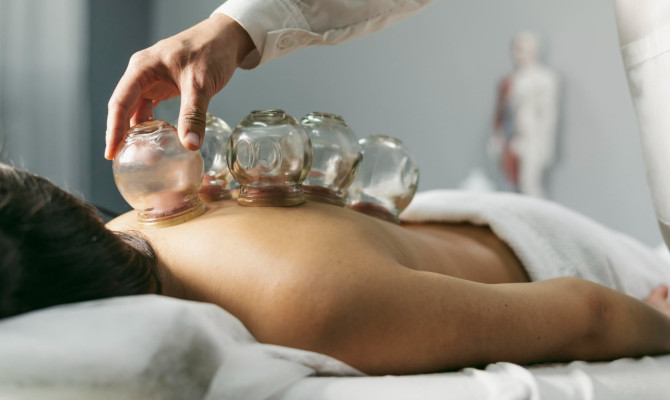What is Water Retention: Understanding the Causes, Symptoms and Treatment

- Water retention
- 22 Aug 2023
Overview
What is Water retention(edema)?
Blood frequently leaks fluid into bodily tissues. This fluid, known as lymph, is excreted back into the bloodstream by the lymphatic system, a network of channels that runs throughout the body. Edema, or the retention of fluid, happens when the fluid in the tissues is not eliminated.
In short, water retention 1Overview| Researched based study from Healthdirect.gov.au is accumulation of fluid in tissues of the body.
This can be triggered by prolonged periods of sitting at work or on airplanes, hormonal changes during pregnancy, or even prolonged periods of standing. Around 60 percent of the human body is composed up of water. Your body has an ability to retain water when it is not properly hydrated.
Depending on the underlying cause, you might be able to decrease edema by changing your diet or avoiding prolonged periods of sitting during the day. Doctors might be able to assist you control the condition if it’s brought on by other medical issues.

Types
Water retention Types
The following are the 2 major types of water retention:
- Generalized Water retention
- Localized Water retention
Generalized edema
- It is when the entire body swells up due to retention of fluid, it is also called Anasarca.
Localized edema
- It is when the retention of fluid is localized to a certain area of the body.
Causes
What are the causes of Water retention?
Among the numerous widespread reasons few are listed below:
Non-medical origin
- Against Gravity: Blood is kept in your lower extremities by gravity. Regularly standing up and moving about will help to keep the blood circulating. Plan time to get yourself up and move about if you’re employed in a desk job.
- In Flights: Your body may begin to hold onto water if the cabin pressure changes or you sit for a long time on a long journey.
- During Summer: The body is less effective at removing fluid 2Causes| Researched based study from Ddnews.gov.in from tissues during the summer because of the heat.
- Burns: In response to burn damage, the skin holds fluid and expands, even minor sunburn can lead to localized edema.
- Before Menstruation: Some women may get edema in the two weeks before their period throughout their menstrual cycle.
- In Pregnancy-Hormones associated with pregnancy cause the body to retain more fluid.
- On usage of contraceptives- Oral contraceptives like the pill that contain estrogen might cause fluid retention.
- Nutrient deficiencies:-dietary insufficiency, such as a diet lacking in vitamin B1 (thiamine) or appropriate amounts of protein.
Medical conditions which lead to water retention are
- In Varicose veins -Weaker valves in the superficial and deep veins of the legs prevent the efficient return of blood to the heart in chronic venous insufficiency leading to pooling of blood in lower limbs.
- Infective Cellulitis-Most commonly seen in diabetic patients, they have a history of previous traumatic injury which leads to severe inflammatory changes leading to Localized edema and local rise of temperature, the organism usually involved is Staphylococcus Aureus.
- Kidney diseases-Diseases such as Nephrotic syndrome, acute glomerulonephritis and nephritic syndrome are some of the many renal issues leading to edema
- Heart failure-The body compensates for the heart’s inefficiency in several ways. Thus, Fluid retention and blood pumping increase.
- Emphysema and other severe chronic lung disorders like emphysema put too much strain on the right ventricle of the heart, which eventually fails.
- Hepatic diseases that lead to Liver failure, such as severe Cirrhosis, Alcoholic liver diseases, Viral Hepatitis because the protein which maintains the fluid mechanism called Albumin is produced by liver cells.
- Malignant lymphoedema is caused by cancerous tumors that obstruct lymphatic system components including lymph nodes.
- Arthritis – Some types of arthritic joints have a propensity to swell with fluid
- Allergic reaction-In those who are sensitive, the body has a propensity to swell in response to specific allergens, such as an insect sting. As part of this process, inflammation and water retention may occurs.
- Anaphylaxis, a severe reaction, is occasionally seen and necessitates immediate medical intervention.
- Autoimmune disorders, such as lupus hereditary angioedema (HAE), which affects one in 50,000 persons due to low levels or ineffectiveness of the C1-inhibitor enzyme, this swelling is transient. Upper airway attacks can be fatal, and they can affect the face, tongue, throat, and intestines.
Complications
Complications
Fluid retention can affect following vital organs:
Brain
- Cerebral edema is the medical term for fluid retention in the brain. This may result in symptoms like nausea, headaches, blurred vision, and balance issues.
- This is an emergency like situation and requires immediate treatment.
Lungs
- Pulmonary edema, or an accumulation of fluid in the lungs, is a dangerous sign that something is wrong with the heart or respiratory system.
- Breathing issues, a cough with sputum, chest pain, and weakness are signs of the condition, which can impair the lungs capacity to deliver oxygen to rest of the body.
Symptoms
Signs and Symptoms of Water retention
These early warning indications of peripheral edema are typical:
- An arm or leg begins to feel heavy or full.
- Your jewelry or clothing begins to feel constrictive and uncomfortable.
- Skin close to the edema feels constrictive or heated.
- Affected joints become more difficult to move.
- Swelling of the affected body parts, usually the hands, feet, and ankles afflicted body parts begin to hurt.
- When squeezed, the skin may hold the indent for a short period of time (pitting edema) due to fast weight growth over a few days or weeks.
- In other circumstances, non-pitting edema, the skin may not leave an impression when touched.
Grading
Grading of Water retention /edema
Edema grading 3Grading| Researched based study from Nlm.nih.gov is a The amount of fluid that has collected in your tissues is assessed and diagnosed using this measurement.
The pitting test
- Your doctor will check for edema in that part of your body by gently pressing a finger on a swollen patch of skin for five to fifteen seconds.
- After they release pressure, a dimple (pit) will form on your skin. The pit is an indication of tissue fluid retention.
The speed at which the dimple returns to normal following a pitting test is quantified by the edema grading scale.
- Instantaneous rebound with a 2-mm pit, is grade 1.
- Rebound time of less than 15 seconds with a 3 to 4 mm pit, is grade 2.
- Rebound time of at least 15 seconds but not more than 60, with a pit of 5 to 6 mm, is grade 3.
- Rebound for two to three minutes using an 8 mm pit in grade 4.
Diagnosis
Diagnosis of Water retention
Before starting the treatment, the underlying cause for The occurrence of Water retention (edema) must be identified.
Primary screening
- Physical examination, Extensive questions or Medical history concerning the fluid retention are asked, including when it started, any aggravating causes, and whether it is ongoing or intermittent.
Lab tests
Blood and urine tests are also performed.
- Complete Hemogram 4Diagnosis| Researched based study from Nlm.nih.gov
- Liver function tests.
- Urine Routine and Microscopy to look for proteinuria.
- Electrocardiograms (ECGs) to rule out Left ventricular hypertrophy or heart failure.
- Renal function tests.
Self care

Self-care Tips for Water Retention
The following strategies can be used to treat mild fluid retention:
- Cut back on the salt in your diet. Stop salting your food at the table and refrain from adding salt when cooking.
- Pyridoxine, a form of vitamin B6, may be helpful in cases of minor fluid retention. Red meat and brown grains are both great sources of vitamin B6.
- Calcium, vitamin D, and vitamin B5 (pantothenic acid) aid in the body’s fluid excretion. Include low-fat dairy products and fresh fruits in your everyday diet.
- Supplements including calcium, manganese, magnesium, evening primrose oil, and chaste tree may be helpful for fluid retention brought on by the menstrual cycle.
- If you are taking any kind of medicine, in particular, talk to your doctor or other health care provider before using supplements.
- Take in a lot of water. Although it may seem counterintuitive, a hydrated body is less likely to retain fluid.
- Reduce your intake of de-hydrating beverages including alcohol, tea, and coffee.5Selfcare| Researched based study from Nlm.nih.gov
- If at all possible, lay down on bed with your legs higher than your head.
- Regular Exercise.1Selfcare| Researched based study from Healthdirect.gov.au
- Put on stockings.
Treatment
Treatment of Water retention
Many edema instances will go away on their own. If an underlying issue exists, a doctor will concentrate on treating it.
Medical intervention
- One type of treatment is diuretics, mainly Lasix. They can aid in the body’s fluid removal process by the kidneys. However, because they can have negative effects like dehydration, increased water retention, and renal damage, these are typically only short-term solutions.1Treatment| Researched based study from Healthdirect.gov.au
Therapeutic interventions
- Limb elevation: Elevating the afflicted limb while sleeping may be helpful if someone has edema in their lower limbs. This will move the limb above the level of the heart. When working, sit with your legs up over your heart.
- Sometimes Magnesium sulfate dressings in conjugation with limb elevations help.
Takeaway
Takeaway
A buildup of fluid in the body is referred to as water retention, edema, or fluid retention. The circulatory system, tissues, and cavities can all experience this.
Being a frequent health problem, water retention can be brought on by a variety of things, including nutrition, menstrual cycles, and heredity. You can reduce water retention by altering your way of living as mentioned before.
Swelling is the main sign of water retention, and the majority of cases of water retention disappears without medical intervention or treatment.
Any feedback on this article?
 This Articles content was accurate
This Articles content was accurate Very Informative Article
Very Informative Article I have a question or a comment
I have a question or a comment
 This article contains inaccurate content
This article contains inaccurate content This article was not helpful
This article was not helpful I have a question or a comment
I have a question or a comment
We appreciate your helpful feedback!
Checkout our social pages
References
-
Health Direct
Fluid retention | Overview | Selfcare | Treatment
-
DD News
Water retention: Causes, symptoms, treatment | Causes
-
National Library of Medicine
A Quantitative Method to Measure Skin Thickness in Leg Edema in Pregnant Women Using B-Scan Portable Ultrasonography: A Comparison Between Obese and Non-Obese Women | Grading
-
National Library of Medicine
Diagnostic approach to lower limb edema | Diagnosis
-
National Library of Medicine
Water, Hydration and Health | Self care




































